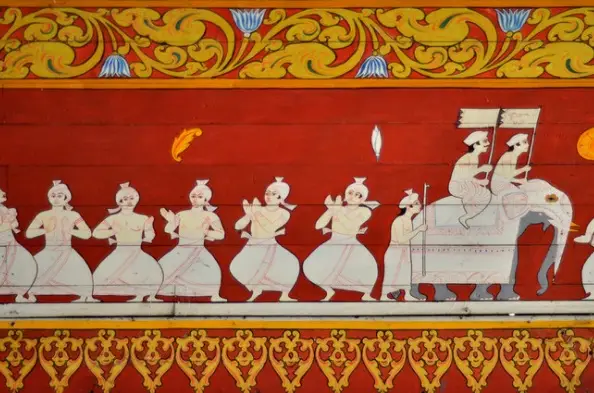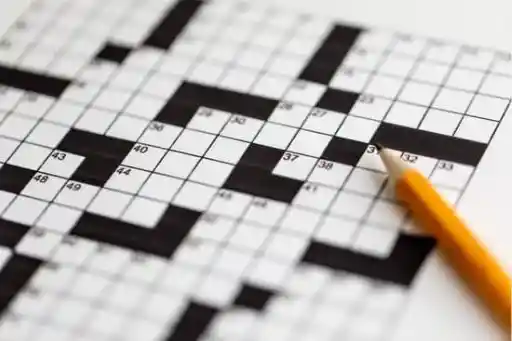Ancient Arts: A Journey Through Time and Creativity

The study of ancient arts shows us a glimpse into the past, helping us understand how people lived, what they believed in, and how they saw the world. From early cave drawings to grand sculptures, ancient artworks are like windows into history, showing us the creativity and culture of our ancestors. This article will take you through different periods, art techniques, and famous works that have shaped our understanding of creativity throughout history.
Prehistoric Art: The Start of Human Creativity
Long before people started writing, they expressed themselves through art. Prehistoric art includes everything from cave paintings to carved figurines, dating back thousands of years. Early humans used natural colors and simple tools to create images of animals, hunting scenes, and even abstract symbols on cave walls. Some of the most famous examples are found in the caves of Lascaux, France, and Altamira, Spain. These early artists showed great skill in observing and capturing their surroundings.
But prehistoric art was more than just cave paintings. People also created carved figurines, rock engravings, and jewelry. One famous piece is the Venus of Willendorf, a small statue from Austria that dates back about 28,000-25,000 years. It shows a woman with a rounded figure, which some believe was a symbol of fertility or a representation of a mother goddess.
The invention of pottery during the Neolithic period was another big step for early artists. Pottery helped store food and water and became a new way for people to express their creativity with intricate patterns and designs. These early artistic efforts laid the groundwork for all the art that would come after, showing that the desire to create and communicate visually is fundamental to being human.
Ancient Egyptian Art: Beauty in the Land of the Pharaohs
Ancient Egypt is known for its impressive buildings and detailed artwork, which have fascinated people for thousands of years. Egyptian art is easily recognized by its stylized forms and use of symbols. It played a significant role in ancient Egypt’s religious and political life.
One unique feature of Egyptian art is how they portrayed the human body. They often showed the head and legs from the side but the torso and eye from the front. This “composite view” method of drawing was used for over three thousand years, showing how much Egyptians valued tradition.
Art in ancient Egypt was more than just for decoration; it had a purpose. Egyptians believed that art could help ensure a good journey to the afterlife. This belief is seen in the elaborate paintings and objects found in tombs. The tomb of Tutankhamun, discovered in 1922, is a perfect example of how much effort was put into preparing for the afterlife.
Egyptian sculptures ranged from giant statues of gods and pharaohs to more minor, detailed carvings on temple walls. The Great Sphinx of Giza is one of the most famous sculptures, with its mysterious human face and lion’s body. More miniature sculptures, like the bust of Nefertiti, show the artists’ ability to capture idealized beauty and actual human features.
Hieroglyphics, the writing system of ancient Egypt, is another example of art blending with communication. These detailed symbols were used for writing and as decorative elements, covering everything from walls to jewelry.
Egyptian art had a vast influence, spreading to nearby cultures through trade and conquest. Egypt’s artistic styles and techniques left a lasting mark on the ancient world.
Mesopotamian Art: The Birthplace of Civilization
Some of the world’s earliest civilizations began in Mesopotamia, the land between the Tigris and Euphrates rivers. The region’s art, including Sumerian, Babylonian, and Assyrian works, reflects the social, political, and religious life of these early societies.
Mesopotamian art is known for its large buildings, detailed relief sculptures, and finely crafted objects. The ziggurat, a pyramid-like structure with steps, was a central part of Mesopotamian cities. It served as a temple and a sign of the city’s power and connection to the gods.
One famous piece of Mesopotamian art is the Code of Hammurabi, a stone slab with one of the world’s oldest laws. At the top of the slab is a carving showing King Hammurabi receiving the laws from a god, showing the divine authority of the ruler.
Assyrian palace reliefs are another example of Mesopotamian art. These carvings show scenes of royal hunts, battles, and religious events, giving us a look into the daily life and history of the Assyrian empire.
The discovery of the Royal Tombs of Ur revealed the wealth and artistry of early Mesopotamian civilization. Artifacts like the Standard of Ur, a mosaic showing scenes of war and peace, display the high skill level of Sumerian artists.
Cylinder seals, small carved stones used to make impressions in clay, are another unique form of Mesopotamian art. These miniature artworks often show mythological scenes or complex patterns and were used as personal signatures.
The art of Mesopotamia laid the groundwork for future civilizations in the region, influencing their architecture, sculpture, and craftsmanship.
Ancient Greek Art: Seeking Perfect Beauty
The art of ancient Greece is one of the most influential traditions in Western culture. Greek artists aimed to capture the perfect forms of the human body and the natural world, creating artworks that still inspire people today.
Greek sculpture evolved, starting with stiff, front-facing figures in the Archaic period and moving to more natural, dynamic figures in the Classical era. The development of the “contrapposto” pose, where a figure stands with its weight on one leg, created a sense of movement and balance in Greek statues. Famous examples like Myron’s Discobolus (Discus Thrower) and the Doryphoros (Spear Bearer) by Polykleitos show this pursuit of perfect proportions and harmony.
Greek pottery also provides much information about their culture, showing scenes from mythology, daily life, and athletic competitions. The black-figure and red-figure techniques used in pottery allowed artists to create detailed scenes on curved surfaces, like the Euphronios Krater, a masterpiece of red-figure pottery.
Architecture was a big part of Greek art, and three main styles were developed: Doric, Ionic, and Corinthian. These styles set the standards for Western architecture for centuries. The Parthenon in Athens is an excellent example of Greek temple architecture, with its precise proportions and subtle design details that create a sense of harmony.
Although few sizeable Greek bronze sculptures have survived, those that do, like the Riace Bronzes, show the advanced techniques of Greek bronze casting.
Greek art influenced many other cultures, including the Etruscans and Romans, and its ideals continue to shape Western art.
Roman Art: Power and Innovation
Building on Greek art, the Romans developed a style reflecting their practical and ambitious nature. Roman art combined Greek ideals with realism and a talent for large-scale engineering.
Roman sculpture is famous for its portrait busts, which captured the individual features of emperors, politicians, and everyday people with great detail. Unlike the Greeks, who aimed for ideal beauty, Roman sculptors focused on realism, showing the character and status of their subjects.
The Romans were also skilled in creating historical reliefs that adorned public monuments like triumphal arches and columns. Like those on Trajan’s Column, these sculptures told stories of military victories and essential events, serving as propaganda and public art.
Roman architecture was revolutionary, with the use of concrete and the development of the arch and dome. The Pantheon in Rome, with its sizeable concrete dome, is a testament to Roman engineering skills. The Colosseum, an iconic symbol of Roman culture, shows the Romans’ ability to create large public spaces that were both functional and visually impressive.
Although fewer Roman paintings have survived, the frescoes from Pompeii and Herculaneum offer a glimpse into Roman wall painting styles. These paintings range from simple tricks of the eye to complex mythological scenes and landscapes.
Roman mosaic art, using small colored tiles to create detailed images, also flourished. The Alexander Mosaic from Pompeii, showing a battle scene, highlights the skill of Roman mosaic artists.
The Romans also created luxury items, like silverware, glass, and carved gemstones, for daily use. The Portland Vase, a famous example of Roman cameo glass, shows Roman artisans’ craftsmanship and artistic refinement.
Roman art spread throughout the empire and beyond, influencing European, North African, and Near Eastern art for centuries.
Ancient Chinese Art: Balance and Tradition
Chinese art is one of the world’s oldest and most continuous traditions, deeply connected to philosophical and spiritual beliefs. Chinese artists focused on harmony with nature, respect for tradition, and inner balance.
Calligraphy, the art of beautiful writing, was highly valued in China and considered the highest form of visual expression. Many Chinese paintings also included calligraphy, blending images and text into a single piece.
Chinese painting developed into two main styles: “gong,” which is detailed and colorful, and “ink-and-wash,” which is more spontaneous and expressive. Landscape painting became a central theme, reflecting Taoist and Buddhist ideas about humanity’s place in nature.
In ancient China, bronze casting reached high skill levels, with ritual vessels showing complex designs and advanced techniques. These bronzes were important in ancestor worship and state rituals.
Jade carving, an ancient Chinese art form, was used to make various objects, from ceremonial weapons to intricate jewelry. Jade was prized for its beauty and its associations with virtue and immortality.
Chinese ceramics, especially porcelain, are another area of outstanding achievement. The development of high-fired ceramics led to beautiful glazing techniques and decorations, like the Tang dynasty’s three-color wares and Song dynasty celadons.
Ancient Chinese architecture emphasized harmony with the environment and balanced proportions. Wooden structures and elaborate roof designs became a hallmark of Chinese buildings.
The influence of ancient Chinese art extended throughout East Asia, influencing Japanese, Korean, and Southeast Asian cultures. Even today, Chinese artistic traditions continue to inspire modern artists worldwide.
Ancient Indian Art: Spirituality and Symbolism
Ancient Indian art is deeply connected to religious beliefs and spiritual practices, strongly influenced by Hinduism, Buddhism, and Jainism. This connection can be seen in the temples, sculptures, and paintings of the Indian artistic tradition.
Indian sculpture is known for its attention to detail and symbolism. It often depicts gods, goddesses, and mythological scenes. The sculptures at the temples of Khajuraho and the Ajanta Caves are prime examples of the skill and creativity of ancient Indian artists.
The development of Indian painting styles, like the Ajanta cave paintings, shows a rich tradition of wall painting that often included vibrant colors and expressive figures. These paintings provide a glimpse into ancient India’s religious and social life.
Indian architecture, especially temple architecture, developed unique styles from region to region. The grand temples of South India, like those at Madurai and Thanjavur, are known for their detailed carvings and tall, tiered towers called “gopurams.”
Textiles and jewelry were also essential art forms in ancient India. Indian textiles, especially silk and cotton, were highly valued for their quality and intricate designs. Jewelry was both a form of decoration and a symbol of social and religious status.
Indian art had a vast influence, spreading to Central Asia, Southeast Asia, and even China through trade and the spread of Buddhism. This cultural exchange enriched the artistic traditions of many different regions.
Conclusion
The art of ancient cultures reflects the diverse ways humans have expressed their creativity and understanding of the world. From the earliest cave paintings to the grand temples of India, ancient art offers a fascinating look at the development of human thought, culture, and society.
Each civilization left its mark, contributing to a rich tapestry of artistic traditions that continue to inspire and influence modern artists.
Whether it is the timeless beauty of Greek sculptures, the detailed realism of Roman portraits, or the spiritual symbolism of Indian temple carvings, ancient art reminds us of the shared human desire to create and communicate across time and space.
By studying ancient art, we gain a deeper appreciation for our ancestors’ achievements and a greater understanding of our cultural heritage. If you also want to read about Waethicc then visit that post.
FAQs
Why is the study of ancient arts critical?
The study of ancient arts provides insights into historical cultures, human creativity, and the development of artistic techniques. It helps us understand our shared cultural heritage and the evolution of human expression.
What are some common themes in ancient art across different cultures?
Common themes include religious and mythological subjects, depictions of rulers and elites, nature and wildlife, and scenes from daily life. Many ancient cultures also explored concepts of ideal beauty and harmony.
How did ancient artists create their works without modern tools and materials?
Ancient artists used various natural materials and developed sophisticated techniques for working with stone, metal, clay, and pigments.





